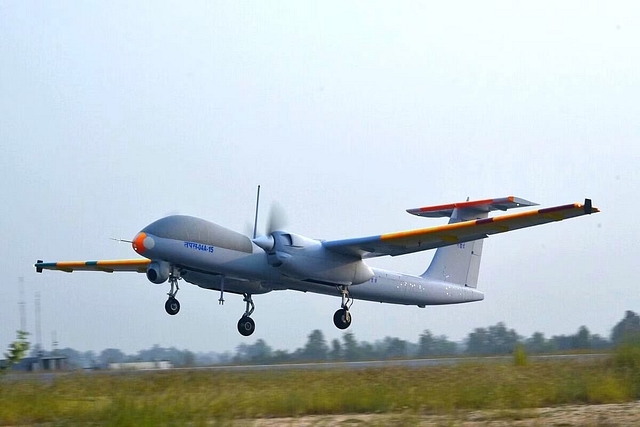SOURCE: RAUNAK KUNDE / NEWS BEAT / IDRW.ORG

India’s pursuit of indigenous military capabilities is driving the development of its Medium-Altitude Long-Endurance (MALE) Class Unmanned Aerial Vehicles (UAVs). As the nation gears up for user trials of the Tapas UAV with the Indian Armed Forces, a new contender, the Archer-NG (Next-Generation), is emerging on the horizon, posing both challenges and prospects for India’s UAV capabilities.
The Tapas UAV, known as the BH-201, has garnered attention for its capabilities, but it is not without its share of challenges. The UAV aims to achieve an operating altitude of 30,000 feet and an endurance of more than 24 hours. However, current flight tests have indicated that the UAV falls slightly short of these targets. Achieving these operational requirements remains a priority, and the Defense Research and Development Organization (DRDO) is working on enhancing the engine’s capacity to meet these goals.
One of the noteworthy features of the Tapas UAV is its T-shaped tail assembly and shoulder-mounted wings design. This design is intended to offer inherent stability and improved control during flight, especially in pitch. However, weight optimization remains a challenge for the Tapas program. Despite ongoing efforts, the UAV’s weight has not been brought down to the desired levels, and this factor could impact its operational efficiency.
Parallel to the Tapas program, the development of Archer-NG has been pursued. The Archer-NG UAV features a Single Engine Twin Boom (SETB) configuration, which has garnered attention for its potential benefits. The twin-boom design enhances structural support, minimizes flexing, and provides efficient mounting of tail assemblies. These features contribute to better flight stability and control.
Archer-NG’s focus extends beyond intelligence and surveillance capabilities; it also incorporates the potential for armed strikes.
The competition between Tapas and Archer-NG is of strategic importance as India seeks to bolster its indigenous UAV capabilities. The Armed Forces’ desire to procure around 97 MALE Class UAVs underscores the significance of this development. While Tapas offers promise, Archer-NG’s more advanced design and stability could provide a compelling alternative.
Time is of the essence for both programs. To secure its position, Archer-NG must swiftly demonstrate its operational readiness and meet the specified requirements. Tapas, on the other hand, needs to overcome its weight challenges and achieve the intended operational capabilities quickly to maintain its competitive edge.
NOTE : Article cannot be reproduced without written permission of idrw.org in any form even for YouTube Videos to avoid Copy right strikes